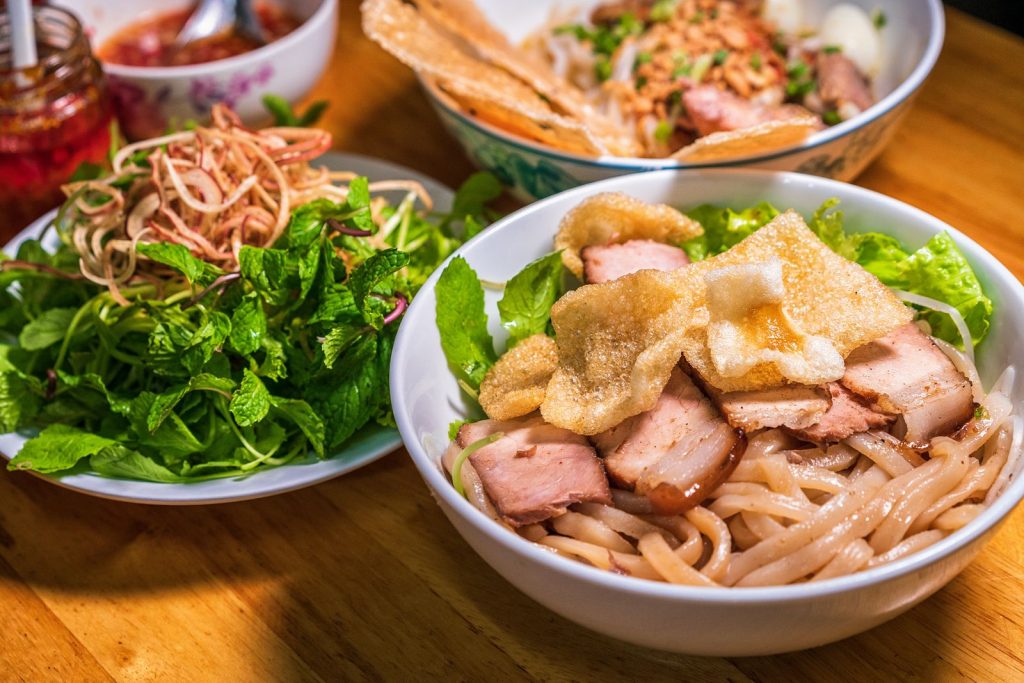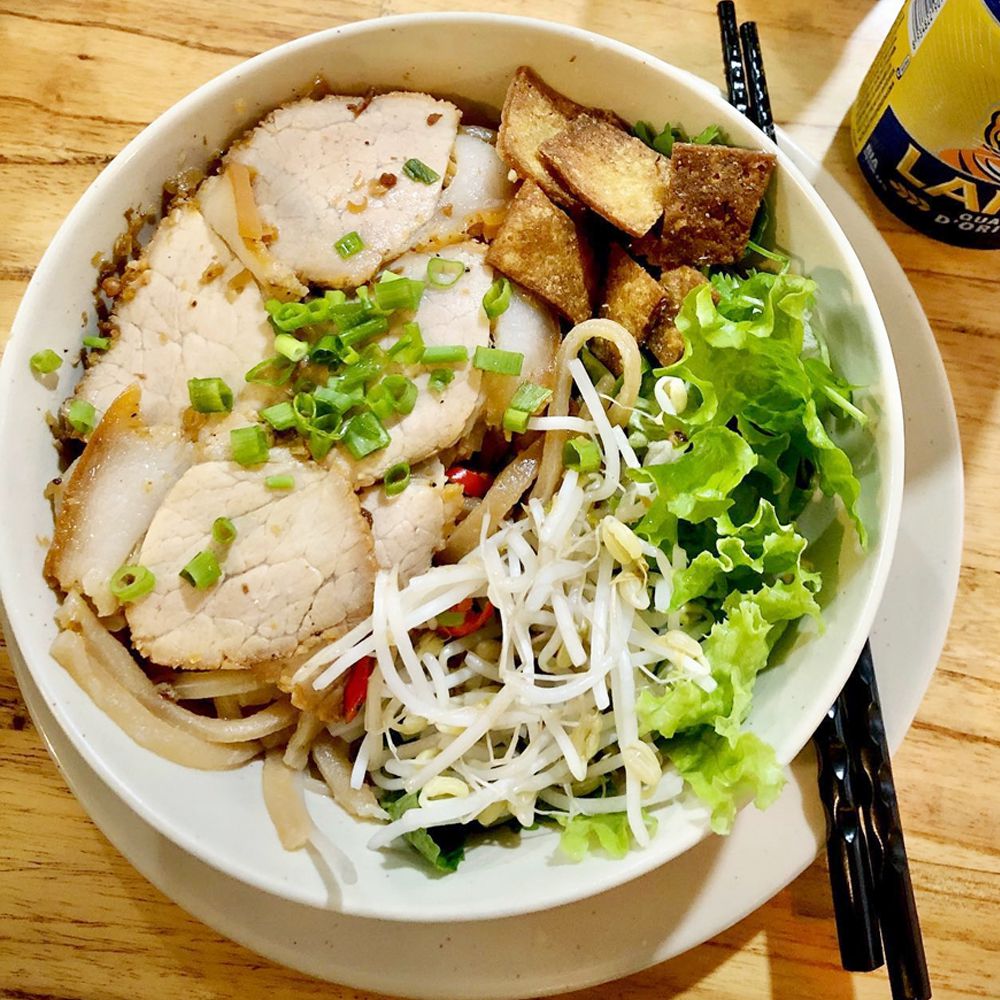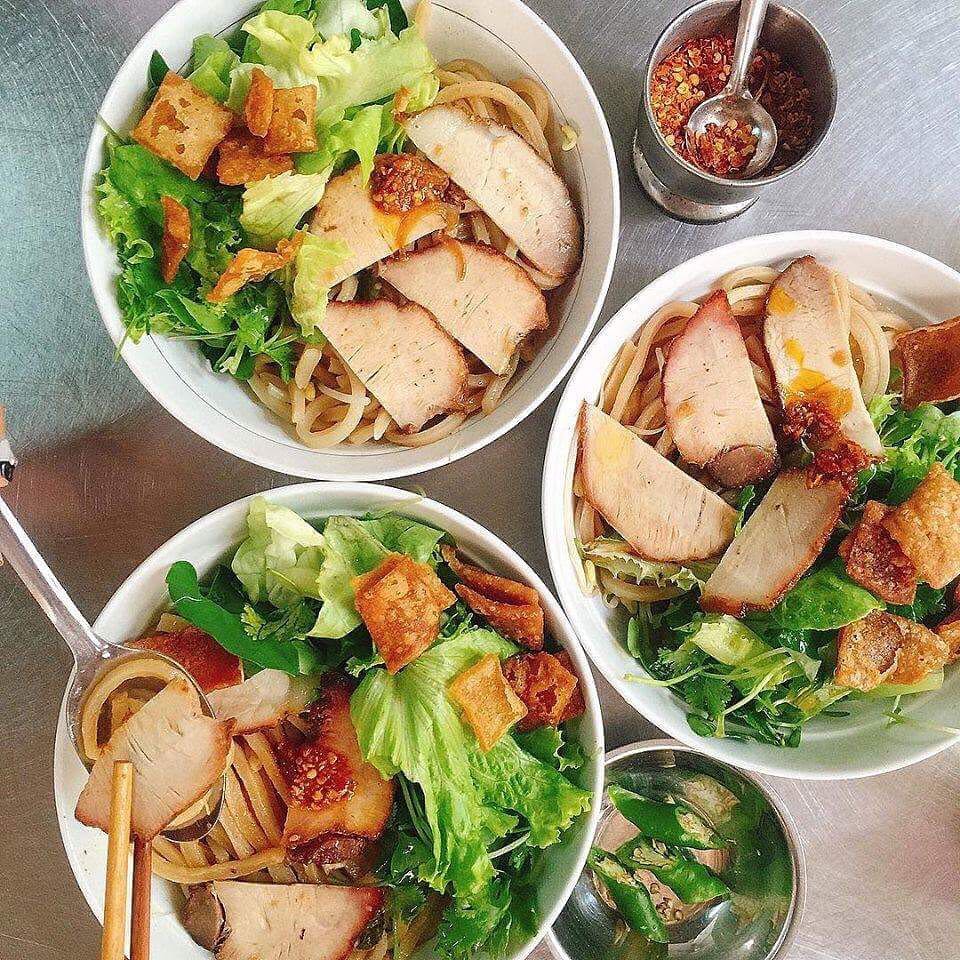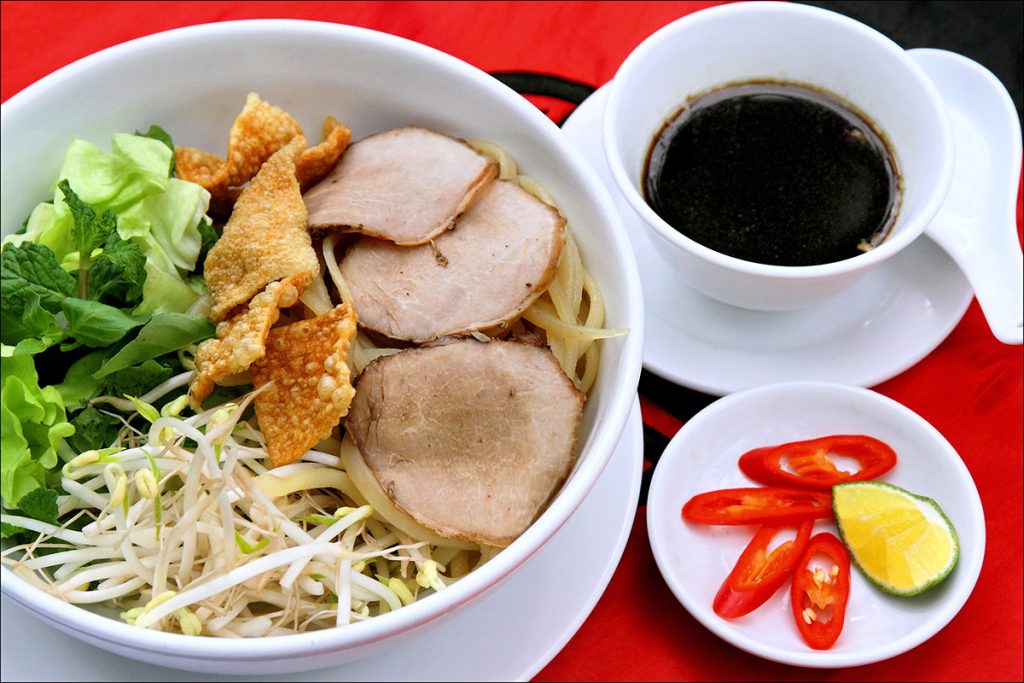Vietnamese cuisine is renowned for its diverse and flavorful noodle dishes, and among them, Cao Lau holds a special place as the signature dish of Hoi An. This unique noodle dish is deeply rooted in the history and culture of the ancient trading port, carrying influences from Chinese, Japanese, and local Vietnamese traditions. Unlike Pho or Bun Bo Hue, which are commonly found throughout Vietnam, Cao Lau is exclusive to Hoi An, thanks to its distinctive preparation method and special ingredients. With chewy rice noodles, slices of marinated pork, fresh herbs, and crispy croutons, all bathed in a savory, lightly spiced broth, Cao Lau is a culinary treasure that embodies the spirit of Hoi An.
The History of Cao Lau
The origins of Cao Lau remain somewhat mysterious, but its history is deeply intertwined with Hoi An’s past as a bustling trading hub. During the 16th and 17th centuries, Hoi An was one of the busiest international ports in Southeast Asia, attracting traders from China, Japan, and Europe. It is believed that Cao Lau was influenced by these foreign cultures, particularly by Japanese udon noodles and Chinese roasted pork dishes. Over time, local chefs in Hoi An developed their own interpretation, creating a noodle dish that is truly unique to the region.
One of the defining characteristics of Cao Lau is the method used to prepare its noodles. The rice used must be soaked in water drawn from the ancient Ba Le well, a centuries-old water source that is believed to give the noodles their signature texture. After soaking, the rice is then mixed with wood ash from Cham Island, a process that gives the noodles their distinctive chewiness and yellowish hue. This traditional preparation ensures that true Cao Lau can only be found in Hoi An, as the unique combination of water and ash cannot be replicated elsewhere.

Cultural Significance
Beyond its delicious taste, Cao Lau is an important part of Hoi An’s culinary identity. Unlike other noodle soups that are commonly eaten for breakfast, Cao Lau is often enjoyed as a lunch or dinner dish. It is traditionally served in small, family-run eateries scattered across the old town, where both locals and visitors can experience the authentic flavors of Hoi An.
For Hoi An residents, Cao Lau represents a sense of pride in their heritage. It is often prepared for special occasions, family gatherings, and local festivals. The dish is also a symbol of Hoi An’s multicultural history, reflecting the various influences that have shaped the town over centuries. Eating Cao Lau is not just about satisfying hunger; it is about connecting with the past and celebrating the unique traditions of the region.

The Flavor and Experience
The first bite of Cao Lau is an unforgettable experience. The noodles have a firm and chewy texture, unlike any other Vietnamese noodle. The broth, made from a light yet deeply flavorful pork-based sauce, coats the noodles perfectly, providing a balanced taste of umami, saltiness, and slight sweetness. The thinly sliced char siu-style pork adds a rich and smoky flavor, while the fresh herbs, bean sprouts, and crispy rice crackers provide contrasting textures that enhance the dish’s complexity.
A key element of Cao Lau is the fresh greens that accompany it. Traditional versions include Vietnamese basil, mint, and lettuce, which give the dish a refreshing contrast to the rich broth and pork. Additionally, crispy croutons made from deep-fried Cao Lau noodles add a crunchy texture that makes every bite even more satisfying.

How to Best Experience Cao Lau
To fully appreciate Cao Lau, consider these tips:
- Find an Authentic Spot: The best Cao Lau is found in Hoi An, especially in traditional markets or family-run eateries where the recipe has been passed down for generations.
- Savor the Unique Noodles: Take time to appreciate the texture of the noodles, which are unlike any other Vietnamese dish.
- Pair with Local Drinks: Enjoy Cao Lau with a glass of fresh sugarcane juice or Hoi An’s signature herbal tea to complement the dish’s flavors.
- Customize to Your Taste: Some locals like to add extra chili, lime juice, or fish sauce to enhance the flavors according to personal preference.

Conclusion
For anyone visiting Hoi An, Cao Lau is a must-try dish that offers a true taste of the town’s history and culture. Its unique preparation, distinctive texture, and perfect balance of flavors make it one of Vietnam’s most fascinating culinary experiences. More than just a meal, Cao Lau tells the story of Hoi An’s rich heritage and the generations of artisans who have kept this tradition alive. Whether enjoyed in a quiet alleyway eatery or a bustling market stall, Cao Lau is a dish that will leave a lasting impression on every traveler, inviting them to savor not just the flavors but also the history and heart of Hoi An.








Discussion about this post